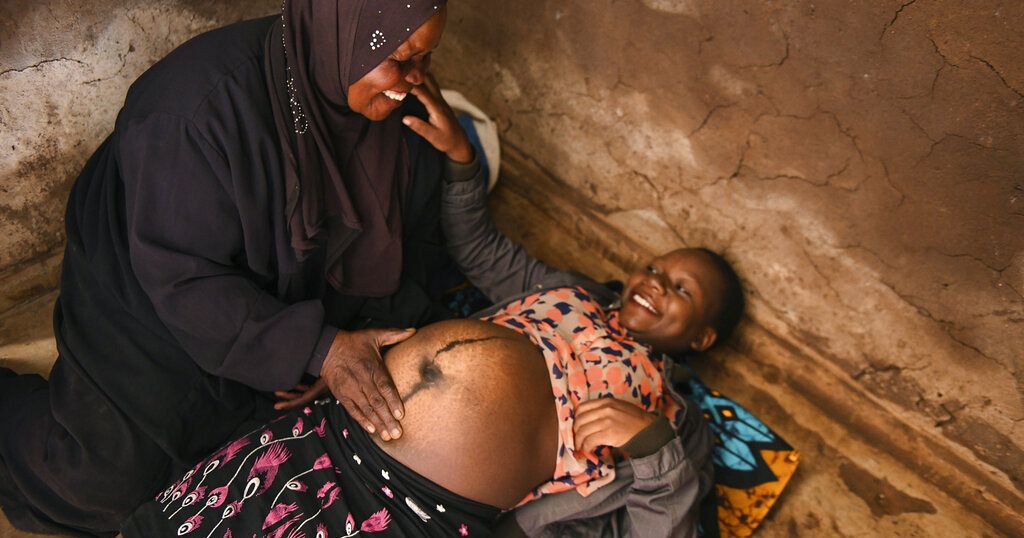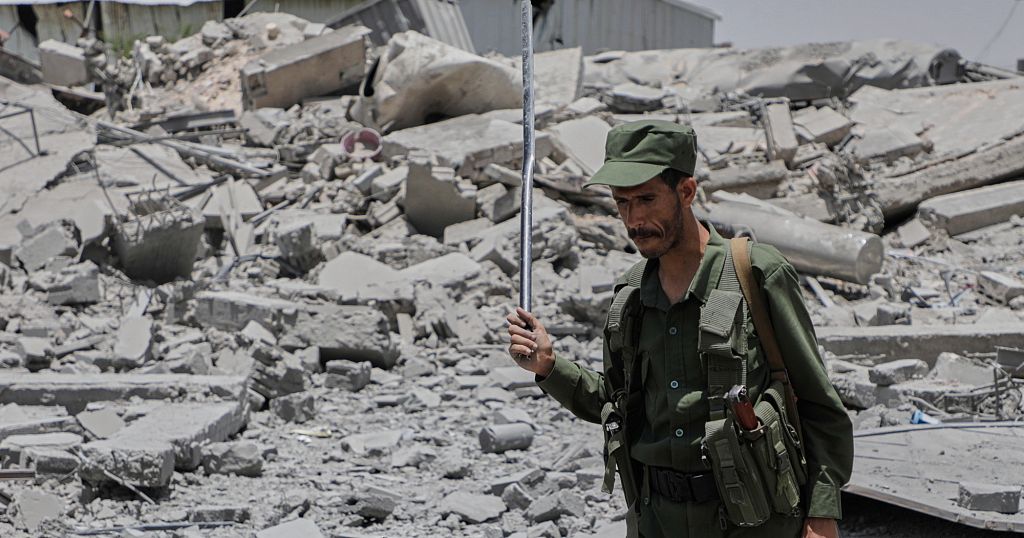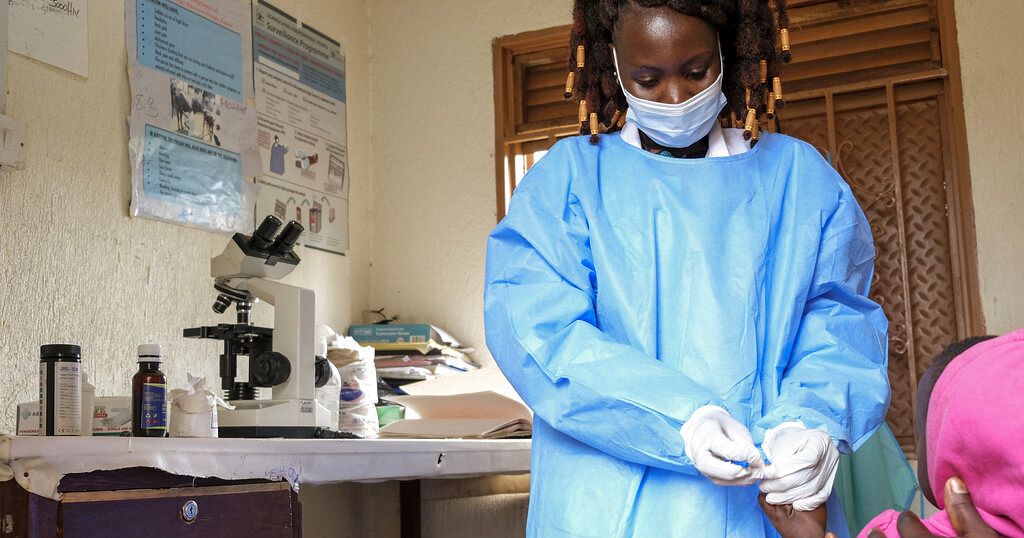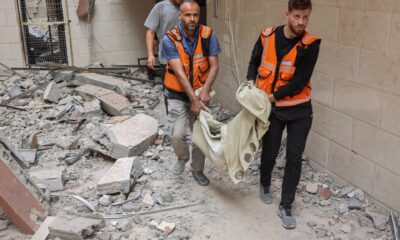Africa
Africa off track on maternal mortality targets, UN warns on world health day 2025

Africa must increase its annual rate of progress twelvefold to meet the global target for reducing maternal deaths by 2030, according to new estimates from the United Nations. While the region has halved maternal deaths since 2000, it still accounts for seven out of every ten maternal deaths worldwide.
The findings, released by the UN Maternal Mortality Estimation Interagency Group, show that maternal mortality in Africa fell from 727 deaths per 100,000 live births in 2000 to 442 in 2023. Despite the decline, the continent remains far off track to reach the Sustainable Development Goal (SDG) target of fewer than 70 deaths per 100,000 live births by the decade’s end.
Thousands of Women and Newborns Still Dying Needlessly
Across the African region, an estimated 178,000 women die each year due to complications in pregnancy or childbirth. Nearly one million newborns also die annually many from causes that are preventable with timely, quality healthcare.
READ MORE : Portable ultrasound devices revolutionize maternal care in Kenya
The most common causes of maternal deaths include haemorrhage, high blood pressure, infections, unsafe abortion, and obstructed labour. For newborns, preterm birth complications, sepsis, birth trauma, and congenital anomalies top the list.
“These are deaths that don’t have to happen,” said Dr Chikwe Ihekweazu, Acting WHO Regional Director for Africa. “But in too many places, pregnancy and childbirth remain life-threatening.”
Slow Pace, Stark Gaps
From 2000 to 2023, the region recorded a modest 2.2% annual reduction rate in maternal deaths. At this rate, Africa is projected to reach nearly 350 deaths per 100,000 live births by 2030, five times the global target.
READ MORE : Women and newborns in South Darfur dying from preventable conditions, MSF alerts
Sub-Saharan Africa is also not on track to meet newborn survival goals. Despite a 33% drop in neonatal mortality and 30% fewer stillbirths since 2000, the region still accounts for 46% of global newborn deaths and 47% of stillbirths. The neonatal mortality rate is expected to remain twice as high as the SDG benchmark of 12 deaths per 1,000 live births by 2030.
What’s Holding Progress Back?
Health officials cite several systemic challenges: underfunded health systems, shortages of trained personnel, weak infrastructure, and repeated shocks like conflicts and disease outbreaks, all of which disrupt maternal and child health services.
In fragile settings, access to care is particularly limited. While over 60% of African countries now report that more than 80% of births are attended by skilled health workers up from 28% in 2010—rural and crisis-hit areas still face acute service gaps.
A Call to Action on World Health Day
This year’s World Health Day, on April 7, marked under the theme “Healthy Beginnings, Hopeful Futures,” places maternal and newborn health at the centre of global attention. The World Health Organization (WHO) is urging governments, donors, and communities to scale up investment and action.
READ MORE : Gauteng’s struggle: why are babies still being born with HIV?
WHO is currently supporting countries in the region with national acceleration plans, updated antenatal and postnatal guidelines, and efforts to expand emergency obstetric and newborn care.
“Healthier mothers mean healthier societies,” said Dr Ihekweazu. “Improving maternal and newborn outcomes is one of the smartest investments a country can make.”
The Road to 2030
As the countdown to 2030 continues, the UN and WHO are calling for bold leadership, stronger partnerships, and sustained financing to close the gaps. The goal is clear: to ensure that no woman dies while giving life and every child gets the chance to survive and thrive.
Africa
Dozens killed in U.S. bombing on Yemeni detention centre for African migrants

Yemen’s Houthi authorities on Monday alleged a U.S. airstrike hit a prison holding African migrants, killing at least 68 people and wounding 47 others. The U.S. military had no immediate comment.
The strike in Yemen’s Saada governorate, a stronghold for the Houthis, is the latest incident in the country’s decadelong war to kill African migrants from Ethiopia and other nations who risk crossing the nation for a chance to work in neighboring Saudi Arabia.
Graphic footage shows aftermath of explosion
Graphic footage aired by the Houthis’ al-Masirah satellite news channel showed what appeared to be dead bodies and others wounded at the site. The Interior Ministry said some 115 migrants had been detained at the site.
The Civil Defense agency said at least 68 people had been killed and 47 others wounded in the attack.
Footage from the site analyzed by the AP suggested some kind of explosion took place there, with its cement walls seemingly peppered by debris fragments and the wounds suffered by those there.
A woman’s voice, soft in the footage, can be heard repeating the start of a prayer in Arabic: “In the name of God.” An occasional gunshot rang out as medics sought to help those wounded.
African migrants caught in middle of Yemen’s war
Ethiopians and other African migrants for years have landed in Yemen, braving the war-torn nation to try and reach Saudi Arabia for work. The Houthi rebels allegedly make tens of thousands of dollars a week smuggling migrants over the border.
Migrants from Ethiopia have found themselves detained, abused and even killed in Saudi Arabia and Yemen during the war. An Oct. 3, 2022, letter to the kingdom from the U.N. said its investigators “received concerning allegations of cross-border artillery shelling and small arms fire allegedly by Saudi security forces, causing the deaths of up to 430 and injuring 650 migrants.”
Saudi Arabia has denied killing migrants.
Africa
Visitors pay their respects at Pope Francis’ tomb

Roman Catholic faithful began visiting the tomb of Pope Francis on Sunday, filing past the simple white tomb in St. Mary Major Basilica a day after he was bade farewell by the powerful of the world and a crowd of hundreds of thousands.
A single white rose was placed on the tomb that said “Franciscus” — the pope’s name in Latin.
A light cast its warm glow over the tomb and a reproduction of the late pontiff’s pectoral cross on the wall above it.
People filed past, many crossing themselves or snapping photos with their phones.
Ushers urged them to keep moving to accommodate the thousands who flocked to the Rome basilica to see the tomb, forming a long line outside.
The tomb was opened on the second of nine days of official mourning for Francis, after which a conclave will be held to elect the next pope.
Meanwhile, a special Mass was held in St. Peter’s Square led by Cardinal Pietro Parolin, the Vatican’s secretary of state.
Parolin is considered a possible contender to be the next pope due to his prominence in the Catholic hierarchy.
No date has yet been set for the conclave, but it must start by May 10.
Cardinals who traveled to Rome for Francis’ funeral will be meeting regularly this week ahead of the conclave as they start to chart a way forward for the 1.4 billion-strong Catholic Church.
Pope Francis chose his place of burial in St. Mary Major Basilica, near an icon of the Madonna that he revered, because it reflects his “humble, simple and essential” life, the archbishop who administers the basilica said Friday.
Africa
Uganda declares end to Ebola outbreak

The announcement by the country’s health ministry came after the passage of 42 days without a single case of the disease.
“During this outbreak, 14 cases, 12 confirmed and two not confirmed through laboratory tests [probable], were reported. Four deaths, two confirmed and two probable, occurred. Ten people recovered from the infection,” The World Health Organization (WHO) said in a statement.
The outbreak was attributed to the Sudan strain. The variant has no licensed vaccine but Ugandan officials authorized a clinical trial for one under development to be given to health workers and contacts of cases.
The outbreak was confirmed in Uganda’s capital Kampala following the death of a male nurse.
It was the ninth time Uganda has detected cases of Ebola. Most outbreaks have been swiftly brought under control.
Ebola infections are frequent in Uganda which has many tropical forests that are natural reservoirs for the virus.
The first ebola outbreak in Uganda was declared in 2000.
The deadliest Ebola epidemic killed more than 11,300 people in West Africa between 2013 and 2016.
-

 Education2 days ago
Education2 days agoHavard students and faculty face the fallout from a showdown with Trump
-

 Sports2 days ago
Sports2 days agoBoston Celtics criticize Orlando Magic’s physicality after another injury in Game 3 loss
-

 Europe2 days ago
Europe2 days agoLive updates: Funeral of Pope Francis, interred at Santa Maria Maggiore
-

 Sports2 days ago
Sports2 days agoLondon Marathon: Why more people than ever before are running marathons
-

 Middle East2 days ago
Middle East2 days agoThirteen killed, dozens under rubble as Israel bombs Gaza amid food crisis | Israel-Palestine conflict News
-

 Europe2 days ago
Europe2 days agoTrump dreams of empire while struggling to keep some promises
-

 Africa2 days ago
Africa2 days agoPope laid to rest at Basilica of Saint Mary Major
-

 Europe2 days ago
Europe2 days agoRussia claims recapture of Kursk border region but Ukraine says fighting continues




